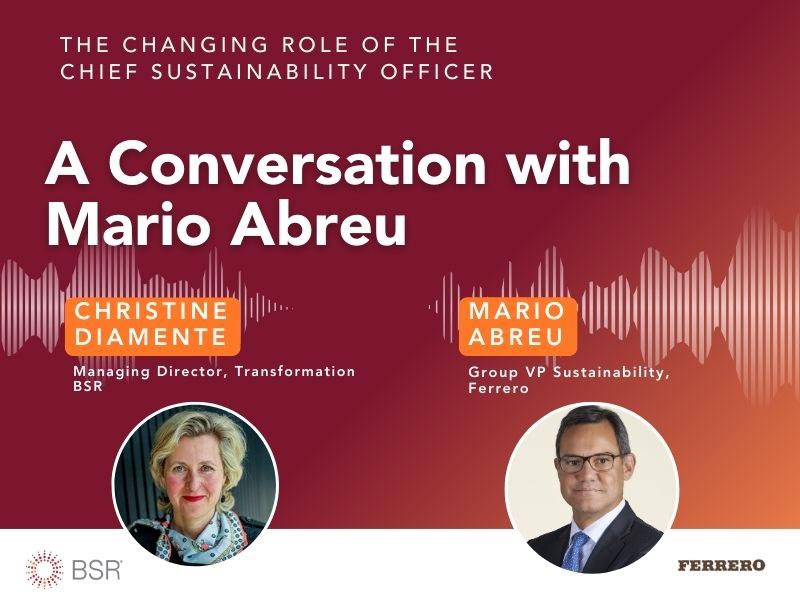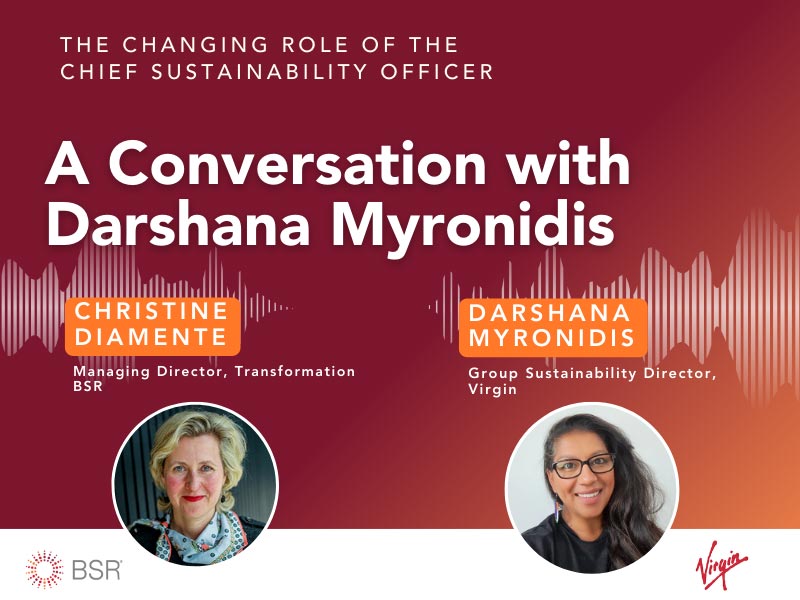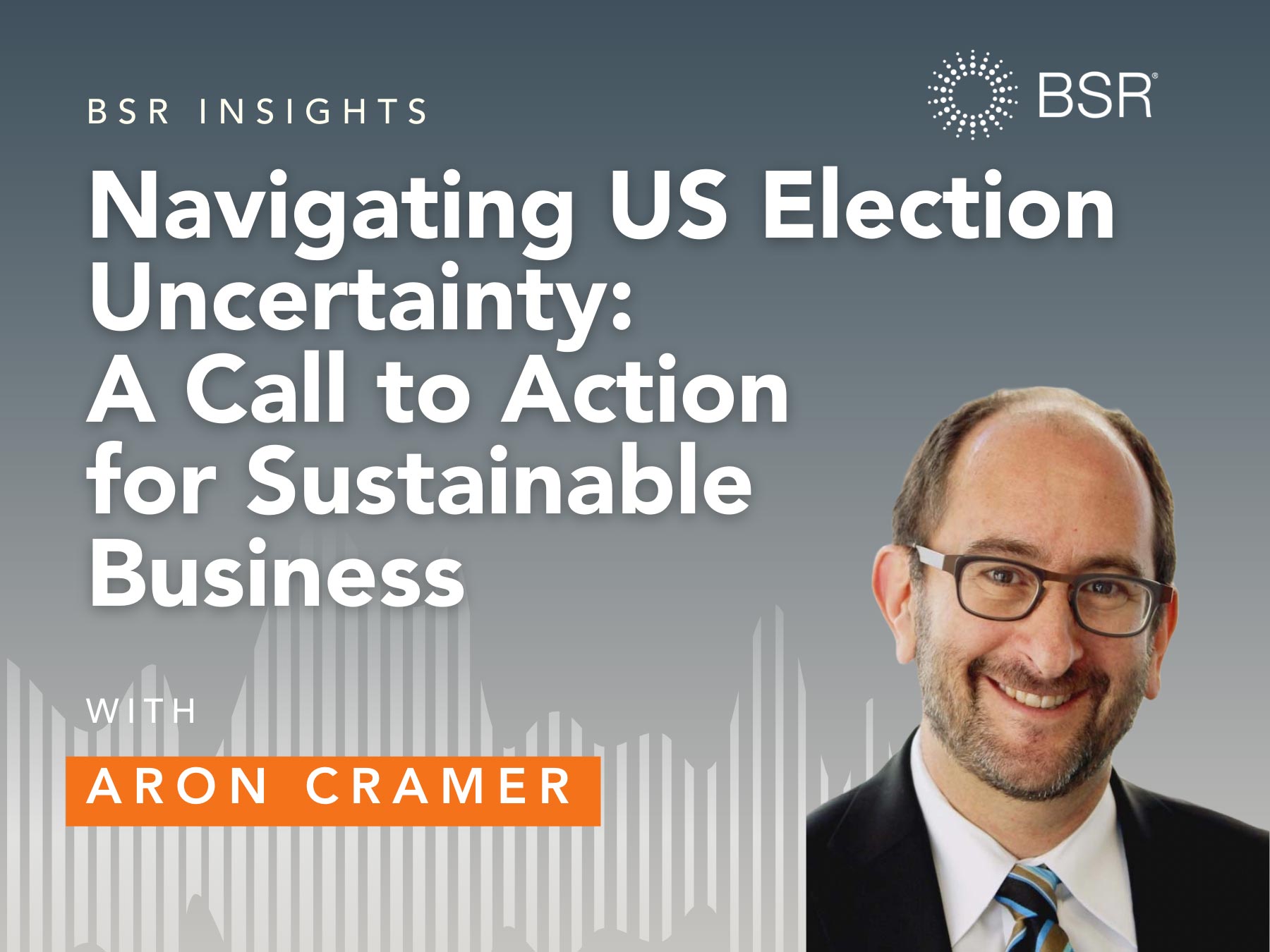
Authors
-
Charlotte Bancilhon
Former Director, Sustainability Management, BSR
-

Director, Sustainable Futures Lab, BSR
This is the second in a four-part blog series dedicated to enhancing the value of materiality assessments. In the first blog, we discussed why companies should assess double materiality. Here, we explore how companies can monitor dynamic materiality.
If you conducted a materiality assessment in 2019 and are wondering if you need to refresh your assessment in light of 2020’s extraordinary events, raise your hand!
Indeed, we can expect the materiality of environmental, social, and governance (ESG) impacts to change over time for many different reasons: stakeholder activism, new regulations, or a global pandemic, to name just a few.
The concept of “dynamic materiality” was first introduced by the World Economic Forum (WEF) in early 2020 and is gaining traction. Now, the five reporting standards—CDP, Climate Disclosure Standards Board (CDSB), the Global Reporting Initiative (GRI), the International Integrated Reporting Council (IIRC), and the Sustainability Accounting Standards Board (SASB)—affirm that materiality should be considered dynamic and that sustainability topics can become financially material over time. Not only that, but according to WEF, “the ability to anticipate stakeholder reactions to emerging sustainability issues and how they could affect a business and its performance is therefore critical.”
Here is how it works in theory: Businesses may take actions that negatively impact society, either through their products or their operations. Initially, the interests of companies and society are misaligned, but society tolerates this. For example, although pharmaceutical contamination of the environment has been known for years to negatively impact water supplies and human health, “companies have not yet been held responsible for this externality.”
Then a catalyst—either a change in company behavior or in societal norms—widens this misalignment. After this, stakeholder activism, regulatory responses, and corporate innovation may all push the issue from immaterial to material, whether for a single company or the whole industry.
Looking back at the concept of double materiality, impacts outward become impacts inward. Take the #MeToo movement that shed light on harassment in the workplace: Through increasing public awareness, workplace harassment rapidly became a material issue for companies like Alphabet that had to settle shareholder lawsuits related to sexual misconduct scandals.
However, while WEF’s “framework for action” notes that increasing evidence and transparency, escalating stakeholder activism, growing responsiveness of key decision-makers, and expanding investor emphasis on ESG are all driving increased dynamism in the materiality of ESG issues, they and other reporting experts offer little guidance in discerning which ESG issues might become material in the future.
A Scenario-Driven Approach to Dynamic Materiality
Given the myriad of uncertainties about the macro environment shaping societal expectations—whether political shifts, technological innovations, or environmental changes—BSR takes a scenario-driven approach to dynamic materiality.
This entails stress-testing a materiality assessment against a set of plausible scenarios for the future to ascertain which ESG issues are likely to become more material over time, which currently immaterial issues may become material, and which ones are highly volatile—that is, highly sensitive to unpredictable shifts in the operating context.
Taking this foresight-driven approach is useful for several reasons:
- It transforms a materiality assessment from a static reporting exercise into an opportunity for strategic foresight. Internal stakeholders consider more deeply how the macro environment is driving stakeholder concerns and what drivers could reshape them in the future.
- It helps firms develop more resilient business strategies that anticipate different versions of the future and hedge against critical uncertainties. This ensures that strategy is developed looking at the road ahead rather than in the rearview mirror.
- It bolsters reporting—helping external stakeholders better understand how the company’s "materiality signature" may change over time and offering assurance that proactive steps are being taken to prepare.
Brendan Seale, former director of corporate sustainability at Scotiabank, recently spearheaded a project with BSR in which we used scenarios to stress-test materiality for his company. He said:
“As we began our materiality assessment in the fall of 2020—in the throes of the pandemic and the swelling consciousness of systemic injustice—it was obvious that many issues had become more important for Scotiabank than they were six or twelve months earlier. We wanted to explore potential changes to materiality over time, and future scenarios helped us to consider how our ESG strategy can be resilient and evolve in our rapidly changing world.”
No business can perfectly predict the future. But applying strategic foresight to materiality will improve outcomes for businesses and stakeholders alike.
To get involved in this work, contact the Sustainable Futures Lab.
Topics
Let’s talk about how BSR can help you to transform your business and achieve your sustainability goals.







